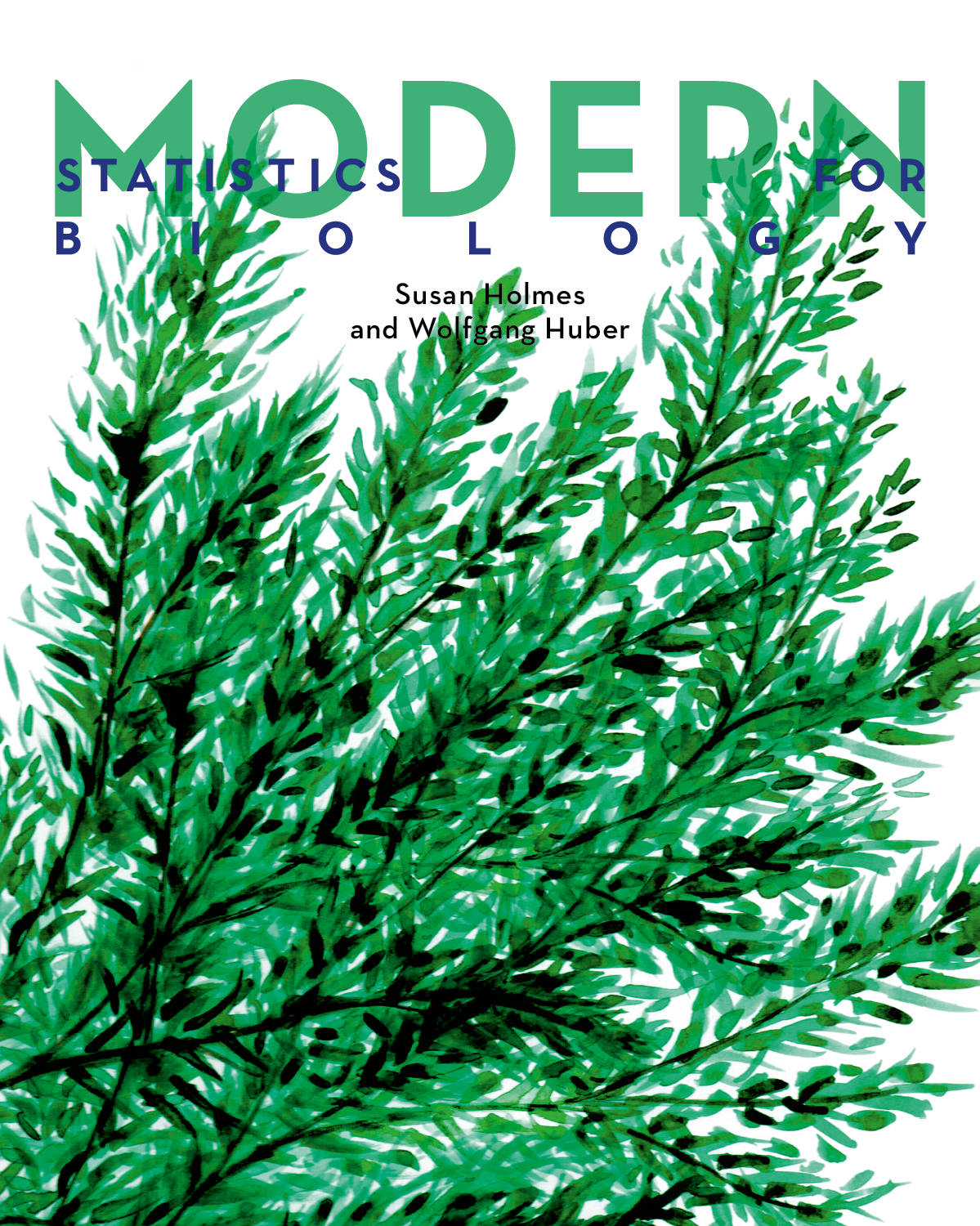Statistician + Biologist = interdisciplinarity at its best.
Q&A with Susan Homes and Wolfgang Huber

Project: Modern Statistics for Modern Biology
Susan Holmes, Professor of Statistics at Stanford University, recently came to EMBL to give a talk in the Distinguished Visitor Lecture series. We took this opportunity to speak to Susan and EMBL group leader Wolfgang Huber about their joint research, their new book Modern Statistics for Modern Biology and the benefits of a Stanford-EMBL collaboration.
Modern Statistics for Modern Biology is available online for free! Take a look.
Susan, tell us a bit about your research.
I’m interested in solving real biology problems. I like to provide tools for scientists to analyse their own data, and to make it easier for them to do it right. So, if they have the tools, it empowers them to do their own thing and we can guide them with tutorials and documentation, which saves everybody’s time. A long time ago, we started with microarrays; now there’s high-throughput sequencing. From the point of view of a statistician, a lot of what comes up is variations on a theme. Biologists sometimes think, “I only want to learn the methods to analyse this one type of data,” but they don’t realise that that specific type of technology will be out of date in two or three years, so they’re better off learning the basic principles of filtering, normalisation, renorminalisation, visualisation, and so on. So those are the variations on a theme.
How did your collaboration with Wolfgang develop?
I met Wolfgang in the early 2000s. We’re both interested in reproducible research tools, so that was a common denominator. All of my collaborations have a lot to do with either the immune system or the microbiome, so my group made a package for the Bioconductor project that would help people analyse microbiome data. Wolfgang was involved in leading Bioconductor so that’s how we got talking.
We also started working on a book around 5 years ago, this has been a moving target because the technologies – especially the computational ones – were changing so fast. Now we’ve finished it: Modern Statistics for Modern Biology, and we’re continuing to make material online and teach courses together at Stanford. We’ve never written a paper together but we have collaborated a lot through students.
“To have interactions -like short stays- that are more than just conference visits, but less intensive than moving your whole life – this is very fruitful.”
What is the major benefit of a being part of The Life Science Alliance?
Wolfgang: For people who are in training, it’s the ability to have different labs from quite different environments to talk to. To have interactions -like short stays- that are more than just conference visits, but less intensive than moving your whole life – this is very fruitful. You can do a project somewhere for six weeks and get new experiences that way.
Susan: Very often – and this is mostly true for undergraduates – students can’t make a decision about what they want to do. But if they try something out during a short-term internship, they can decide, “Oh, I can see myself thriving in this environment,” or, “I don’t like this at all.” If you go for two months, it’s not the same commitment, it’s not so high risk, and I think that helps.
What advice do you have for other researchers who are interested in joining the alliance?
Susan: I think having people come back and forth for visits is a good thing. Once people get to know each other, the internet makes it very easy. But only once you’ve established a common language, and that needs to be done in person. I think having a joint programme for postdocs will be great, as it’s the same idea – the human part is important.
“So the whole idea of our approach is to make tools to put in the hands of the biologists. We’re saying, “we want to teach you.” Nothing should be a black box.”
What are your future plans for this collaboration?
Susan: We obviously have a lot of overlap. What I see as the future of biology is this systems approach where you look at multiple things at the same time – for example, a person’s immune system plus the microbiome and the transcriptomics – so you have multi-modalities. I think all of us are developing methods and resources for doing that. We try to make our statistical methods applicable to heterogeneous data so it’s easy for biologists to use them. Otherwise it just becomes all these black boxes and they lose that empowerment. So the whole idea of our approach is to make tools to put in the hands of the biologists. We’re saying, “we want to teach you.” Nothing should be a black box. The way forward is to make more tools, have more visualisation, and make keeping in contact with the biological data easier to do.
Read more about research in the Holmes lab at Stanford or the Huber group at EMBL.